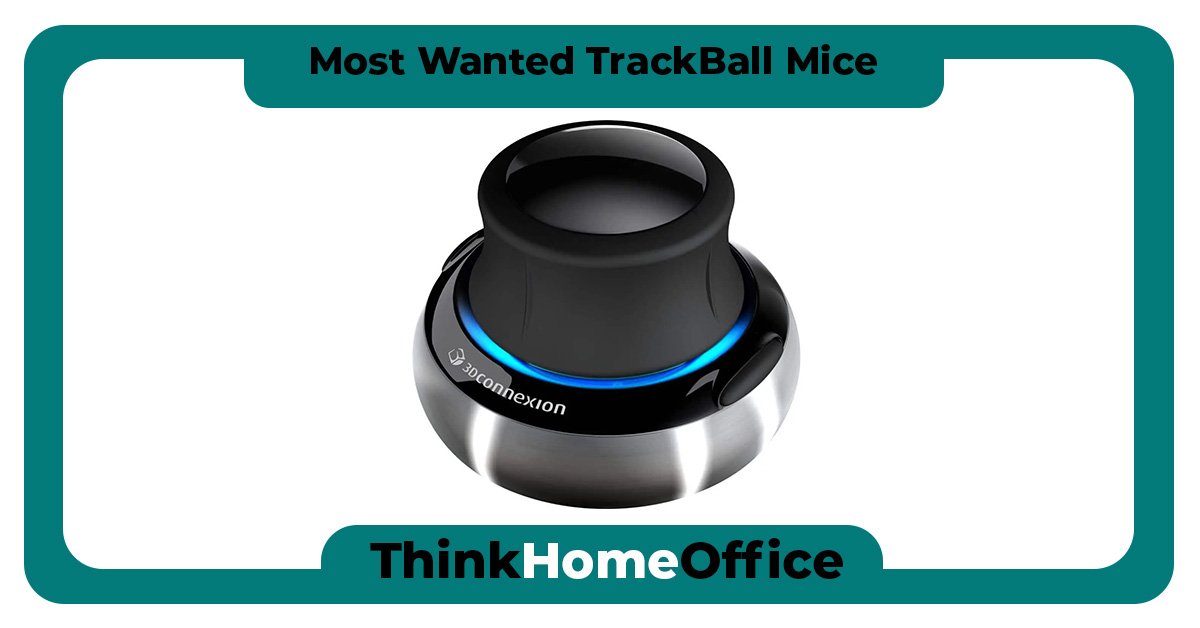In the realm of lighting, it is crucial to understand the impact of color temperature on both aesthetics and productivity. The right bulbs can make all the difference in creating a conducive work environment, enhancing concentration levels, and stimulating alertness. In this article, we unravel the intricacies of color temperature and explore its connection to work efficiency. By shedding light on the science behind this phenomenon, we aim to equip readers with the knowledge and insight necessary to make informed decisions when selecting lighting solutions for their professional spaces.
Understanding Light Bulb Basics
Light bulbs are a fundamental component of our everyday lives, providing us with the illumination we need in our homes, offices, and outdoor spaces. Understanding the basics of light bulbs is essential for making informed decisions about the types of bulbs we choose for different settings.
Parts of a Light Bulb
A light bulb typically consists of several key parts that work together to produce light. The bulb itself contains a filament, which is heated and emits light when an electric current passes through it. The filament sits within a glass or plastic envelope that protects it and allows the light to shine through. At the base of the bulb, there is a contact point for connecting to a power source. Some bulbs also incorporate additional features, such as reflectors or diffusers, to control the direction and quality of the light emitted.
Types of Light Bulbs
There are various types of light bulbs available in the market today, each with its own unique characteristics and applications. The most common types include incandescent bulbs, compact fluorescent bulbs (CFLs), and light-emitting diode bulbs (LEDs). Incandescent bulbs produce light by heating a filament, while CFLs and LEDs use different technologies to generate light more efficiently. LED bulbs have gained popularity in recent years due to their energy efficiency, long lifespan, and versatility.
How Bulbs Produce Light
To understand how bulbs produce light, it is crucial to delve into the basic principles of electricity and light emission. When a light bulb is connected to a power source, an electrical current flows through the filament, heating it to a point where it emits visible light. Incandescent bulbs emit light through the process of incandescence, which involves heating the filament until it glows. CFLs and LEDs, on the other hand, use different mechanisms such as phosphor coatings or electroluminescence to generate light more efficiently.
Defining Color Temperature
Color temperature refers to the perceived warmth or coolness of light emitted by a light source. It is measured on the Kelvin scale, which quantifies the color appearance of light based on its temperature. Color temperature plays a significant role in setting the mood and atmosphere of a space, as well as influencing our perception of objects and surroundings.

What is Color Temperature
Color temperature is a characteristic of light that describes its color appearance based on its temperature in degrees Kelvin (K). It is often used to categorize light sources into warm and cool tones. Warm light sources, with lower color temperatures around 2500K to 3000K, emit light that appears slightly yellowish or orange. In contrast, cool light sources, with higher color temperatures above 5000K, produce light that appears bluish or whitish.
Measuring Color Temperature: The Kelvin Scale
The Kelvin scale is a temperature scale commonly used to measure color temperature. It starts at absolute zero (-273.15 degrees Celsius), where molecular motion ceases, and extends into the positive temperatures that we commonly encounter in daily life. The higher the Kelvin value, the cooler or bluer the light appears, while lower Kelvin values result in warmer or yellower light.
Common Color Temperatures in Light Bulbs
Different light bulbs are available in a range of color temperatures to suit various applications and personal preferences. Common color temperatures include:
- Warm White (2500K-3000K): This range represents the warmest light, similar to the color of candlelight. It creates a cozy and intimate atmosphere, making it suitable for residential spaces, restaurants, and cafes.
- Cool White (3500K-4100K): Falling in the middle of the color temperature spectrum, cool white light appears neutral and balanced. It is often used in commercial settings, such as offices and retail spaces, where a combination of efficiency and a crisp, clean look is desired.
- Daylight White (5000K-6500K): Daylight white light simulates natural daylight and appears bright, with a bluish hue. It is commonly used in outdoor lighting, hospitals, and task-oriented environments where high visibility and alertness are required.
Impact of Color Temperature on Mood and Atmosphere
Our perception of light and its color temperature has a profound impact on our mood, emotions, and the overall atmosphere of a space. Understanding the effects of different color temperatures can help us create the desired ambiance and enhance our well-being in various settings.
Effect of Cool Light Temperatures
Cool light temperatures, with higher Kelvin values, tend to create a more energetic and sterile environment. The bluish-white light can evoke a sense of alertness and focus, making it suitable for workplaces where productivity and concentration are essential. It is also commonly used in retail environments to highlight products and create a vibrant shopping experience.
Impact of Warm Light Temperatures
Warm light temperatures, with lower Kelvin values, have a calming and comforting effect. The yellowish or orange glow can create a cozy and intimate atmosphere, making it ideal for residential spaces, restaurants, and hospitality settings where relaxation and socialization are desired. Such warm lighting can also add a touch of elegance and warmth to retail spaces selling luxury or traditional products.
Neutral Light Temperatures: Balance between Warm and Cool
Neutral light temperatures, falling in the middle of the color temperature spectrum, offer a balanced and versatile lighting option. Neither too warm nor too cool, neutral light is often preferred in office environments where a comfortable and non-distracting atmosphere is needed. It can also work well in educational institutions, healthcare facilities, and areas where people engage in both work and relaxation activities.
Understanding Work Efficiency
Work efficiency refers to the level of productivity achieved in a given task or work environment. It encompasses factors such as accuracy, speed, focus, and overall performance. The lighting conditions in the workplace play a crucial role in influencing work efficiency and the well-being of employees.
Defining Work Efficiency
Work efficiency is the measure of how effectively individuals or teams perform tasks to achieve desired outcomes. It involves optimizing the use of resources, including time, energy, and effort, to produce high-quality work in a productive manner. Efficient work environments not only enhance productivity but also contribute to job satisfaction and overall well-being.
Factors Affecting Work Efficiency
Several factors can impact work efficiency, including lighting conditions. The quality and quantity of light in the workplace have a direct influence on visual comfort, visual performance, and cognitive processes. Insufficient or inadequate lighting can lead to eye strain, reduced focus, and impaired decision-making, ultimately hampering work efficiency.
Role of Lighting in Work Efficiency
Proper lighting plays a crucial role in creating an optimal work environment and promoting work efficiency. Adequate illumination enables employees to see clearly, minimizing the risk of errors and increasing accuracy. Good lighting also supports visual comfort, reducing eye strain and fatigue. Additionally, lighting design that considers color temperature can help establish the desired atmosphere and boost mood, further enhancing work efficiency.
Influence of Color Temperature on Work Efficiency
The color temperature of lighting in the workplace can significantly impact work efficiency. Extensive research studies have explored the relationship between different color temperatures and their effects on cognitive performance, productivity, and mood. Understanding the impact of color temperature can help organizations optimize lighting conditions for specific work scenarios.
Research Studies on Light and Work Efficiency
Numerous research studies have investigated the effects of color temperature on work efficiency. For example, a study conducted by the Lighting Research Center at Rensselaer Polytechnic Institute found that cool light with higher color temperatures enhances focus, attention, and cognitive performance. In contrast, warm light with lower color temperatures can promote relaxation and a sense of well-being but may be less effective for demanding cognitive tasks that require sustained attention.
Examples of Work Scenarios Benefiting from Different Color Temperatures
Different work scenarios may benefit from specific color temperatures depending on the nature of the tasks and desired outcomes. For analytical tasks requiring intense focus and concentration, cool light with higher color temperatures can increase alertness and accuracy. On the other hand, warm light with lower color temperatures may be more suitable for creative work, brainstorming sessions, or areas where relaxation and creativity are encouraged.
How to Programmatically Adapt Color Temperature in the Workplace
Modern lighting systems can now be programmed to adjust color temperature dynamically, catering to the specific needs of different work scenarios. By utilizing lighting controls and automation technology, organizations can optimize lighting conditions based on the time of day, nature of work, or individual preferences. This flexibility ensures the right color temperature is available when it is needed, maximizing work efficiency and well-being.
Choosing the Right Bulbs for Different Work Settings
Selecting the right bulbs for different work settings is crucial to provide optimal lighting conditions and support work efficiency. Different work environments have varying lighting requirements based on the nature of the tasks, visual needs, and desired atmosphere.
Optimal Bulbs for Office Spaces
In office spaces, a combination of functionality, visual comfort, and energy efficiency is essential. LED bulbs with a color temperature in the neutral range, around 3500K to 4100K, are often recommended for office environments. This color temperature promotes a balanced and non-distracting atmosphere while providing adequate illumination for computer work, reading, and collaboration.
Ideal Bulbs for Creative Spaces
Creative spaces, such as design studios or art workshops, often require lighting that enhances creativity and inspiration. Warm white LED bulbs with color temperatures around 2500K to 3000K can create an inviting and cozy ambiance that promotes relaxation and free-thinking, encouraging creative ideas to flow.
Best Bulbs for Task-Oriented Workspaces
Task-oriented workspaces, such as laboratories or assembly lines, demand precise and focused lighting. Cool white LED bulbs with higher color temperatures, typically in the range of 5000K to 6500K, provide a bright and energetic lighting solution necessary for detail-oriented tasks. The cooler light promotes alertness and aids concentration, ensuring accuracy and preventing errors.
Choosing Bulbs for Night Shifts
For night shifts or workplaces with extended evening hours, it is essential to consider the impact of lighting on circadian rhythm and overall well-being. Warm white LED bulbs with lower color temperatures can help create a sense of relaxation and mimic a natural nighttime environment, supporting better sleep patterns and reducing the disruption caused by artificial lighting during the night.
Energy Effectiveness of Different Bulbs and Their Color Temperatures
With increasing emphasis on energy efficiency, considering the energy consumption of different bulbs becomes crucial alongside their color temperature. The combination of the right bulb type and color temperature can maximize energy savings while providing suitable lighting conditions.

Energy Consumption of Various Bulb Types
Different types of bulbs have varying energy consumption levels. Incandescent bulbs are the least energy-efficient, converting only a small percentage of the electrical energy into visible light. CFLs are more efficient than incandescent bulbs, utilizing less energy for the same light output. However, LED bulbs offer the highest energy efficiency, consuming significantly less electricity while delivering the same or higher lumen output.
How Color Temperature Affects Energy Consumption
The color temperature of a light bulb does not inherently affect its energy consumption. However, selecting a cooler or warmer color temperature may indirectly impact energy usage based on our perception and subsequent use of artificial lighting. For example, cool white light may appear brighter, leading individuals to use fewer bulbs or lower-wattage bulbs, resulting in energy savings. However, personal preference and the desired visual effect should still guide color temperature choices.
Efficient Strategies for Lighting in the Workplace
To maximize energy effectiveness in the workplace, it is important to adopt efficient lighting strategies. This includes using energy-efficient bulbs such as LED bulbs and choosing the appropriate color temperature for each area. Implementing lighting controls, such as occupancy sensors or daylight sensors, can further optimize energy consumption by adjusting lighting levels based on actual needs. Regular maintenance and monitoring of lighting systems also ensure optimal performance and reduce unnecessary energy waste.
Health Implications of Color Temperature
The color temperature of lighting not only affects our visual perception and work efficiency but also has implications for our overall health and well-being. Different color temperatures can influence our circadian rhythm, cause eye strain, and impact mental health.
Effects of Light on Circadian Rhythm
Light, particularly blue light, plays a crucial role in regulating our circadian rhythm or internal body clock. Exposure to blue light, typically associated with cool white light, suppresses the release of melatonin, a hormone that promotes sleep. Prolonged exposure to cool light before bedtime can disrupt sleep patterns and affect overall health. Warm light with lower color temperatures has a minimal impact on melatonin production and is suitable for evenings or nighttime environments.
Color Temperature and Eye Strain
Eye strain is a common issue experienced when working under inappropriate lighting conditions. Cool white light, particularly at higher color temperatures, may increase the risk of eye strain due to higher levels of blue light. Prolonged exposure to blue light can cause discomfort, dryness, and fatigue in the eyes. By choosing bulbs with lower color temperatures and incorporating proper task lighting, individuals can reduce the strain placed on their eyes during intensive visual tasks.
Influence of Light on Mental Health
Light has a significant impact on our mental health and well-being. Cool white light, with its energizing properties, can elevate mood and increase alertness, potentially benefiting individuals with depressive symptoms or seasonal affective disorder. On the other hand, warm light creates a soothing and calming atmosphere that may help reduce stress and anxiety. Understanding the relationship between light and mental health can guide the selection of appropriate lighting solutions for different spaces and individual needs.
Technologies for Adjusting Color Temperature
Advancements in lighting technology have made it possible to adjust color temperature dynamically, allowing for greater flexibility and customization. Various technologies and lighting systems enable users to adapt color temperature based on specific requirements or preferences.
Adaptive Lighting Systems
Adaptive lighting systems utilize sensors and control algorithms to automatically adjust the color temperature of lighting based on factors such as time of day, natural light levels, and human presence. These systems create a dynamic and responsive lighting environment that aligns with our natural circadian rhythm and enhances overall well-being. Adaptive lighting is particularly beneficial in workspaces where a balance between daylight and artificial light is crucial.
Light Bulbs with Adjustable Color Temperatures
Certain light bulbs on the market come with built-in features that enable users to adjust the color temperature to suit their needs. These bulbs often have a range of color temperature settings, allowing for customization and experimentation. Users can select warmer or cooler tones depending on the desired ambiance, task requirements, or personal preferences.
App-Controlled Bulb Systems
The increasing popularity of smart home technology has brought forth app-controlled bulb systems that provide users with a convenient way to adjust color temperature and lighting conditions. By simply using a smartphone or tablet, users can control the brightness and color temperature of bulbs, creating personalized lighting scenes or schedules based on their activities or mood. App-controlled systems offer flexibility and convenience, further enhancing the integration of color temperature into our lighting choices.
Conclusion: Integrating Color Temperature into Your Lighting Choices
Balancing efficiency, cost, and comfort in lighting design requires a thoughtful consideration of color temperature. By understanding the basics of light bulbs, color temperature, and its impact on work efficiency, we can make informed choices when selecting bulbs for different work settings. The right color temperature not only enhances our mood and atmosphere but also maximizes work efficiency and supports overall well-being.
Continuous improvement and experimentation should be encouraged to fine-tune lighting conditions based on specific work requirements and individual preferences. Remaining aware of technological advances in adaptive lighting systems, adjustable bulbs, and app-controlled solutions allows us to stay updated with the latest opportunities for integrating color temperature effectively into our lighting choices. By harnessing the power of light and color temperature, we can create environments that not only meet our functional needs but also elevate our experiences and quality of life.






